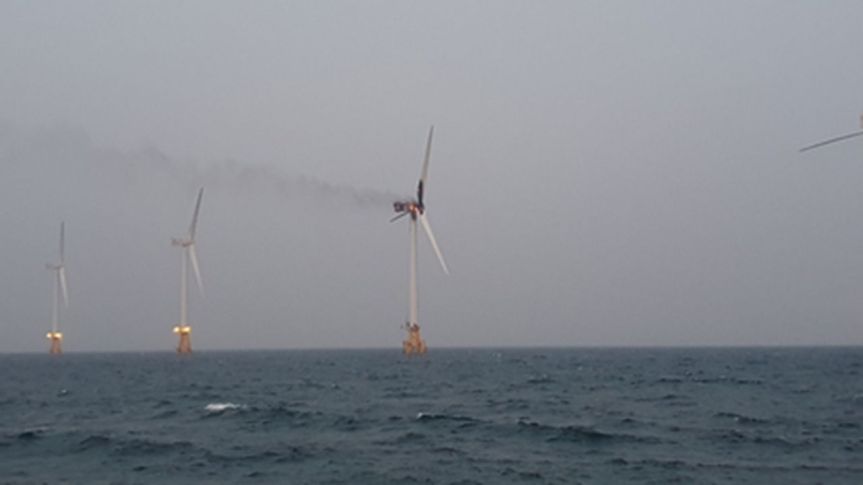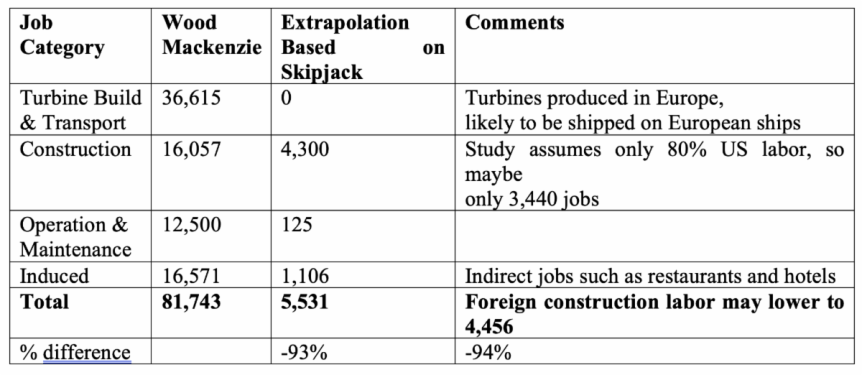The rocketing power prices caused by subsidised wind and solar have destroyed thousands of jobs in manufacturing and mineral processing, for starters. But, retorts the renewable energy rent seeker, think of all the green jobs ‘created’ by the wind and solar industries.
Whether you call it a ‘Green New Deal’ or a ‘Great Green Reset’, the promised boom in meaningful and lasting employment turns out to be little more than hot air.
Increase power prices, as with any input cost, and profits inevitably diminish. Meaningful employment depends upon healthy and sustainable profits. So, as any student of that dismal science will readily tell you, any policy that drives up power prices will inevitably drive up unemployment rates. So far, so simple.
True it was that Germany saw an increase in renewables-related employment – the bulk of it in the development and manufacture of solar panels – but all of it was built on a raft of taxpayer and power consumer subsidies: it was – therefore – economically unsustainable.
Any job that relies on a subsidy results in a loss of employment elsewhere in the economy. In Germany, the subsidies for “green” jobs are paid for in rocketing power prices, which impacts on the profitability and competitiveness of all businesses and industries. A number of German manufacturers – and other energy intensive industries – faced with escalating power bills decided to pack up and head to the USA – where power prices are 1/3 of Germany’s (see our posts here and here and here). In the result, Germany faces a decline in industrial output and, therefore, declining employment.
As soon as the Germans started to wind back subsidies for renewables (see our post here), the “green” jobs that were built on the back of them soon disappeared: Germany’s Unsustainable “Green” Jobs “Miracle” Collapses
The renewables subsidy story in Spain was no different. The Spaniards threw 100s of billions of euros in subsidies at solar and wind power, and achieved nothing but economic punishment in return. The much-touted promise of thousands of so-called “green” jobs never materialized. No surprises there. Instead, the insane cost of subsidising wind and solar power ended up killing productive industries; the general unemployment rate rocketed from 8% to 26% – youth unemployment ended up nearer to 50% in many regions (see our post here). For more on the Spanish renewables disaster see the study produced by the Institute for Energy Research available here.
In Spain, just as elsewhere, the great bulk of employment in the wind industry involves fleeting construction work (once the turbines are up, there’s nought to do) – of the jobs created:
“two-thirds of which came in construction, fabrication and installation, one quarter in administrative positions, marketing and projects engineering, and just one out of ten jobs has been created at the more permanent level of actual operation and maintenance”.
That the Spaniards had to stump up “subsidies of more than €1 million” to create each wind industry job; that each wind industry job thus created, killed off 2.2 jobs elsewhere in the economy; and that each MW of wind power capacity installed destroyed 4.27 jobs – is nothing short of an economic disaster (see our post here).
With that dismal record in mind, it would take a special brand of delusion to believe the wind industry spin that America’s planned offshore wind power push will deliver an endless stream of meaningful employment. David Stevenson reveals another great ‘green’ jobs hoax below.
US Offshore Wind Jobs are Highly Exaggerated
Caesar Rodney Institute
David T Stevenson
13 May 2022
Offshore wind supporters like to quote a Wood Mackenzie research study that says building 29,000 megawatts (MW) of offshore wind electric generating capacity on the Atlantic seaboard by 2030 will create 80,000 annual full-time US jobs between 2025 and 2030.
Extrapolating from an actual approved project leads to an estimate of only about 5,500 jobs, and even that number may be high. Further, the study ignores possibly over 25,600 jobs potentially lost from huge electric premiums that redirect consumer and business spending elsewhere in the economy.
The Maryland Public Service Commission (PSC) recently approved the 846 MW Skipjack 2 offshore wind project off Delaware’s coast. A review[i] of the project by the PSC consultant indicates there will be 857 temporary construction jobs and 25 permanent Operational & Maintenance jobs.
The Wood Mackenzie study assumes 4,200 MW a year of new offshore wind will be constructed between 2025 and 2030, about five times the Skipjack 2 project. Table 1 below compares the Wood Mackenzie study job estimates to a number based on the Skipjack project.
Table 1: US Job Forecast Comparison
There are limited plans to build the turbines in the US, which accounts for 56% of the forecasted jobs. Induced jobs are indirect jobs created by the wages spent by direct employees and change as payroll estimates change.
The Wood Mackenzie study assumes that over half the new projects would be off the Carolinas. However, any new project needs massive state subsidies, and neither North Carolina nor South Carolina has such legislated mandated subsidies.
Money spent on higher utility bills reduces spending on everything else, like going to a restaurant or the movies.
The Skipjack project premiums[ii] will be passed onto electric customers and may average $125/MWh for the 3.3 million MWh of wind energy produced each year, or about $410 million a year. That extrapolates to $2.05 billion a year for the 4,200 MW construction the study expects. A job may be lost for every $80,000[iii] spent on higher electric bills, so up to 25,600 jobs may be lost.
Wood Mackenzie is generally reliable, but this study misses by a country mile and is misleading elected officials and the public.
[i] Maryland Public Service Commission Docket 9666, item 33, ICF International “Evaluation and Comparison of Marwin II and Skipjack Wind proposed offshore wind project applications” Exhibits 56 and 59.
[ii] ORECs represent the premium price paid for the Skipjack offshore wind power. Ørsted has reported on an OREC cost of $71.61/MWh, but this is in 2012 and is subject to a 3% a year increase for twenty years once the project starts, Ørsted media announcement.
[iii] The Balance, “Do Tax cuts create jobs” payroll tax data shows a job gained for each $76,923 in tax cuts ($1,000,000 =13 jobs); Beacon Hill Institute, “The proposed Massachusetts carbon tax; a high-cost low benefit policy” Table 4 shows investment would fall $925 million and reduce jobs by 11,090 = $83,408 jobs.
Caesar Rodney Institute




The subsidy template is based on the European ‘butter mountain & milk lake’ (1970s) when increased production threatened to lower food price profit so farmers were paid not to produce.
With electricity being subsidised not to produce, it drives prices up – at last the rort of having one’s cake & eating it too – can’t say better than that!
Can you help. I live in Denmark where we also fight. We hear about Simon Chapman and his worke, writing about windturbines.
Was he given a verdict for giving incorrect information
Bent Martinussen Denmark
Sendt fra min iPhone
Hi Bent, not to our knowledge.